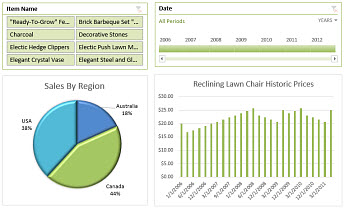

- #Microsoft excel data analysis and business modeling plug in code#
- #Microsoft excel data analysis and business modeling plug in download#
To get this into Excel you’re going to need two things from this website, so copy these somewhere:
#Microsoft excel data analysis and business modeling plug in code#
Next step is to narrow down the data set to only what is relevant, so I make GeographyType: Zip code and StateAbbreviation “WA” and hit “RUN QUERY”. If I click on that link to the data set, the first option is to “Explore Data Set” and that’s exactly what I want to do. Type “Demographics” in the search box and find a data set called “2010 Key US Demographics by ZIP Code, Place and County (Trial)”. Make sure you have a Microsoft/Live-ID or sign up for one free. This place is great, and you can read all about it here. Good thing there is a marketplace for just this type of inquiry ( ). I want to better understand the demographics of the Zip codes I have selected. One thing I noticed about all of the real-estate listing sites is that they give you a ton of detail about the listing but don’t really tell you much about the neighborhood. So now I have a layout that shows me the number of houses that met my criteria per Zip code and some extra data like Average Price, Square footage and Days on Market (my realtor says this comes in real handy when negotiating). I added LIST PRICE, DAYS ON MARKET and SQFT and changed the Value Field Settings to AVERAGE.Īt this time my PivotTable looked something like this: I have decided to add a couple more fields to my PivotTable to help with my analysis.

As you can see, I only have to sift through 165 house listings now (L). To do this, right click on the header that says SUM of LISTING ID -> Value Field Settings… and change to COUNT.


By default, this will give me a SUM of LISTING ID’s, but we want a COUNT. To do this I drag the ZIP field to ROWS and the LISTING ID field to VALUES. The first thing I want to do is look at the number of houses I have selected by zip code. I chose to add this data to my Data Model because I am going to be combining it with data I will get from other sources to make my analysis more complete. For those of you with some database knowledge this is similar to creating joins between tables, except all the tables live in Excel. In other words, the new Data Model allows for building a “model” where data from a lot of different sources can be combined by creating “relationships” between the data sources. Within Excel, Data Models are used transparently, providing data used in PivotTables, PivotCharts, and Power View reports“. “ A Data Model is a new approach for integrating data from multiple tables, effectively building a relational data source inside the Excel workbook. I have highlighted a new option in the create PivotTable dialog which is to “Add this data to the Data Model”. Under the INSERT tab, hit PivotTable and the The first thing I am going to do is create a PivotTable so that I can sift through it easily. If you open the file above you will see I have a table with a lot of data.
#Microsoft excel data analysis and business modeling plug in download#
You can see what I started with below or just download the workbook for yourself. One thing I noticed though was that none of the these sites by themselves had all the relevant data I wanted to make an informed decision and this is where the Data Model came into play by allowing me to combine data from multiple sources and perform a richer analysis. This data was easy to find on the many real-estate sites out there like or. So like any self-respecting Excel nerd I started a spreadsheet with a table of data that fit our parameters. Īround this time last year my wife and I were considering purchasing a house in the Seattle area, even if it meant dealing with some of the worst traffic in the US. Some of these articles are a bit old but the principles and functionality still apply. Not just because I will be showing you another way Excel can make your data analysis easier but also because I will be introducing the new Data Model and Relationships features that will hopefully change the way you use Excel for data analysis forever.įor those of you who are not familiar with the power and usefulness of Pivot Tables you might want to check out this article ( Overview of PivotTable and PivotChart reports) or this training ( PivotTable I: Get started with PivotTable reports). I am very happy to be writing this blog post today. This blog post is brought to you by Diego Oppenheimer a Program Manager on the Excel team.


 0 kommentar(er)
0 kommentar(er)
